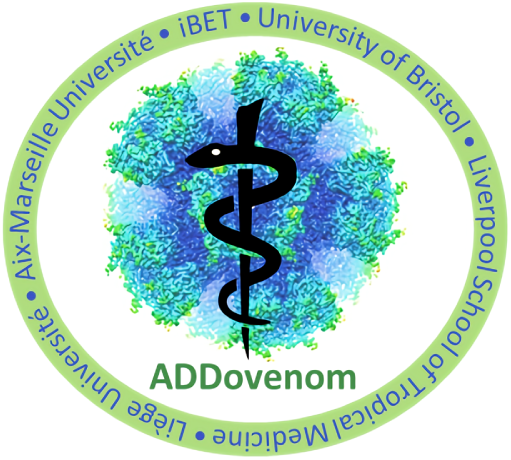For our Researcher Spotlight features, we interview members of the ADDovenom research team, to find out about their interests, their contributions to the project, and their hopes for the future of venom research.
Here, we speak with Johara Stringari, a Research Associate in the School of Biochemistry at the University of Bristol.
Can you tell us briefly about your own research interests and background?
I have 16 years of experience in research on animal venoms, working mainly on the production and characterization of recombinant toxins and omics applied to toxin discovery and antivenom effectiveness assessment. I have got a multidisciplinary expertise, being skilled principally in the great areas of molecular biology, biochemistry, and toxicology.
When did you first become interested in venom research?
I have been focused on animal toxins for all of my career, but my first contact with the world of snake toxins occurred during my Scientific Initiation, when I was still an undergraduate student in life sciences.
What are your key responsibilities in the ADDovenom project?
In the ADDovenom project, I will apply the ribosome display technique for the in vitro selection of specific and high-affinity binding ADDobodies against specific toxins from African viper and mamba snakes. I am also one of the team responsible for the design of a humanized nanobody library that will be synthesized and applied in the selection of high affinity-binding nanobodies against necrosis-inducing toxins.
What do you hope will be the main outputs from your work on ADDovenom?
It is a consensus in the scientific community that antivenom therapy is obsolete and that improvements in the available snakebite treatment are imperative to increase antiserum efficacy and avoid serum sickness. Therefore, my expectations are to contribute to the success of the ADDovenom group and support the development of an effective and affordable antivenom therapy, reaching the most in need countries in Sub-Saharan Africa.
Can you tell us of one recent development in the world of venom research that has interested you?
I would cite all the innovations that were (or will be) possible with the advent of biotechnology, such as genetic and protein engineering applied in the development of more effective antivenom therapies.
Do you have a favourite snake – if so, which one, and why?
I have a particular interest in the South American rattlesnake Crotalus durissus, since I dedicated years of my Master’s and PhD to investigating the venom composition and the fascinating evolutionary history of these snakes, which developed a highly specialized and lethal venom by a paedomorphosis process, i.e., the retention of juvenile characteristics from their ancestors from the Central America.
Is there anything else you would like to tell us?
I’m glad to be part of the ADDovenom project and to work with the some of the most renowned researchers in the field and I am very much looking forward to being able to reap the fruits of this work.


